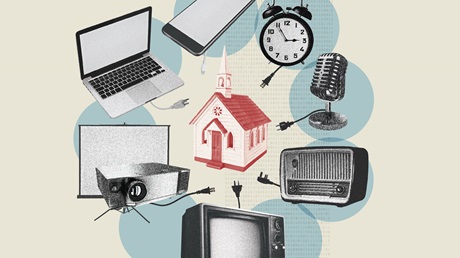New communications technology lets us preach to millions. It’s time to unplug most of it.

‘It is time,” the founder of this magazine once said, “for the church to use technology to make a statement that in the midst of chaos, emptiness, and despair, there is hope in the person of Jesus Christ.” It was classic Billy Graham, who was born two years after the invention of the condenser microphone. There was no technology he didn’t find of use in his evangelistic efforts. The Hour of Decision radio show immediately became one of the country’s most popular. He created a television version and a film production company in 1951, when most conservative Christians were still skeptical of both media. His 1954 London crusade experimented with relay transmissions to hundreds of venues across Britain. Four decades later, he was similarly testing the limits of satellite broadcasts.
This magazine, too, is a result of Graham’s passion to bend every possible communications medium toward that “statement of hope.” In the mid-1950s, magazines like Life and The Saturday Evening Post literally cast a vision for what it meant to be an upwardly mobile American. Newspapers had long relayed the important events of the day (Graham has been there too; his “My Answer” column still appears today). Television was just starting to come onto the scene. Magazines were where the country went to talk about itself, and the 1950s saw a boom of launches of idea-driven magazines, from the hedonism of Hugh Hefner’s Playboy to the conservatism of William F. Buckley’s National Review. Like Life, liberal Protestant magazine The Christian Century was much older, but its influence was broad. “While its circulation is small, its influence is tremendous,” Graham lamented …


